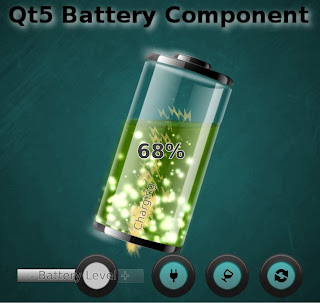
This time we have a dynamic QML component for showing the remaining power of your mobile device battery. As a recap, with "Dynamic QML component" I mean someting which utilizes not only basic QML animation properties (position, opacity, scale etc.) but also new Qt5 features (shaders, particles, scenegraph powa!) to appear "more dynamic". Maybe it's just me, but I would love to see UIs really utilizing modern GPUs... and accelerating this progress is one of the reasons why I code these examples and blog about them. Another reason being to rule-the-world, obviously ;-P
Instead of explaining design & features of QUItBattery component I'll let this video to do that:
If you want to use this liquid battery component in your UI: Download the sources from here, copy QUItBatteryComponent directory, import it in your QML and off you go. Happy hacking!

